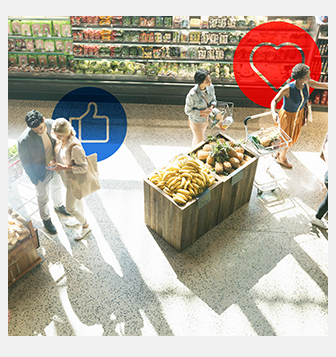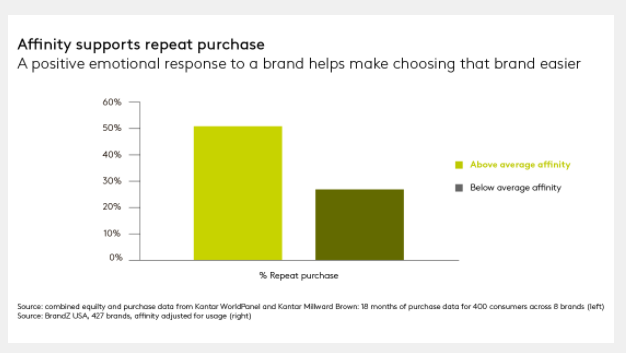 A lot has been said about the value of having consumers love your brand. But what does this mean, and how can brand love be achieved?
A lot has been said about the value of having consumers love your brand. But what does this mean, and how can brand love be achieved?
Is it Love or Like?
The first thing to say is that most consumers do not ‘love’ brands. At best they like them. Kantar Millward Brown’s emotional priming research demonstrates that most brands evoke a mild, instinctive liking, but not a more passionate response.
There are also differences by country and category; for example, in the US, Affinity is strongest for salty snacks and confectionery and weakest for banking and insurance.
Does Affinity matter?
Our global BrandZ™ database reveals a strong correlation between Affinity and brand use. People who buy a brand tend to like it. However, this doesn’t tell us whether people are buying the brands they like, or liking the brands they buy. There are brands that buck this trend; some discount brands are purchased but not much liked; and some premium brands are admired more than purchased.
Additional analysis shows that Affinity has an important role in encouraging repeat purchase. Combined data from Kantar WorldPanel and BrandZ shows that people are twice as likely to buy a brand again if they like it to start with.
Brands with higher Affinity than their level of usership would suggest, tend to have a higher Premium Index – the potential to support a higher price.
BrandZ analysis further backs this up; people say they will pay more for a brand they like.
Improving brand Affinity
What steps can be taken to improve Affinity? It seems advertising is a contributing factor to improving brand Affinity. There is a relationship between brand Affinity and great advertising. A brand that has great advertising is likely to be liked. However, analysis of our Link™ advertising database shows that to produce likeable advertising, you don’t necessarily have to produce ads which are enjoyed – ads which convey relevant, different information are also liked.

There are also some brands that are liked which don’t have great advertising. A second route to Affinity is to be meaningfully different. Brands that have relatively high Affinity compared with their level of usership, index much more highly on being Different and being Meaningful. Good examples include car brands such as Audi, BMW, Lexus, and Mercedes; and tech brands like iPhone and amazon, as well as brands like Pampers and Lavazza.

In summary, levels of love for brands tend to be low, but there are several ways to improve affinity. Higher Affinity is related to use, which results in higher repeat purchase, and can help justify a price premium. Enjoyable advertising can also help build brand Affinity. And, being meaningfully different, and promoting the brand’s meaningful difference through advertising can also help.
Written by Dominic Twose, Global Head of Knowledge,Kantar Millward Brown

